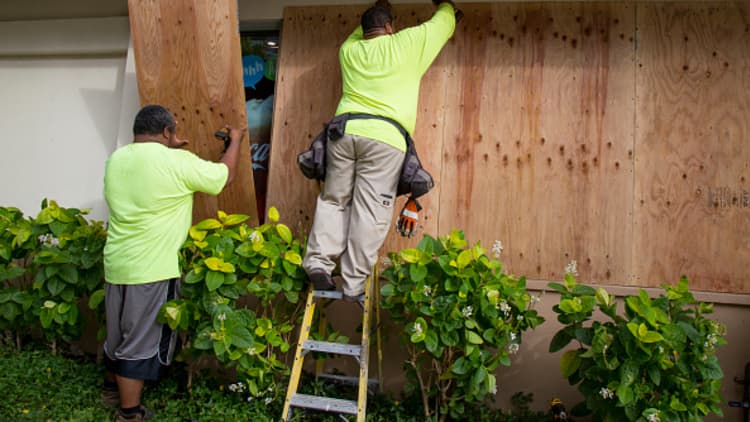
A rare hurricane is bearing down on Hawaii, and it raises concerns about the state's unusual electric power system.
At the heart of the problem is a dirty secret: The island paradise still burns petroleum to provide most of its electric power. Hawaii has pledged to go 100 percent renewable by 2045, but petroleum-fired power plants still produce about two-thirds of its large-scale power generation.
That's fairly rare in the developed world, but it's not uncommon in remote locations with isolated power systems. Hawaii certainly fits that profile, and it makes the state's electric power system uniquely vulnerable to hurricanes.
Hurricane Lane is weakening as the center of the storm blows toward Hawaii, but it's still classified as a Category 4. The system is currently pounding Hawaii's Big Island with rain, and flooding and landslides have been reported in some areas.
Meteorologists are concerned about Lane because it's a fairly slow-moving storm, which increases the likelihood of heavy rainfall.
Last year, Hurricane Harvey lingered over the Houston area, where devastating flooding knocked out refineries and petrochemical plants. In the end, Harvey temporarily wiped out about a quarter of U.S. refining capacity.
There are two oil refineries located in Honolulu, the Hawaiian capital on the southwestern coast of the island of Oahu. Those two facilities process crude oil into most of the gasoline and other fuels consumed in Hawaii. The products are then shipped by sea to the other islands in the archipelago state. Hawaii also relies on imports of jet fuel and some diesel.
"The transport of refined product between the refineries and the smaller islands is going to come to a complete halt," said Andrew Lipow, president of Lipow Oil Associates. "Vessels that deliver crude to the refineries will be diverted outside of the path of the storm until the storm passes."
That's not a problem if the storm comes and goes without causing too much trouble. However, storm damage to the Honolulu refineries or to ports anywhere in the archipelago could snarl the supply chain. In a worst-case scenario, Hawaii would burn through its limited petroleum stockpiles, leaving power plants short of fuel.
Refiners risk causing damage to their facilities and releasing large bursts of pollution if they power them down too quickly. The Par Hawaii and Island Energy refineries in Honolulu did not respond to an inquiry about steps they're taking to prepare for the storm.

To be sure, most blackouts during storms can be traced to the grid, and specifically downed power lines. The islands' utilities are already warning Hawaiians to prepare for outages. They're also moving crews and equipment to areas likely to be affected.
Many Hawaiian homes are fitted with solar panels — about one-third of household rooftops in Oahu have them. However, solar arrays tied to the power grid are switched off during an outage for technical and safety reasons. Homes would need to have on-site batteries to draw stored solar power during a blackout.
The Big Island, Maui and Oahu are all under hurricane warning. Hurricane Lane's path is uncertain, but meteorologists expect it to hook left and travel along the island chain. The critical question is how close it will get.


